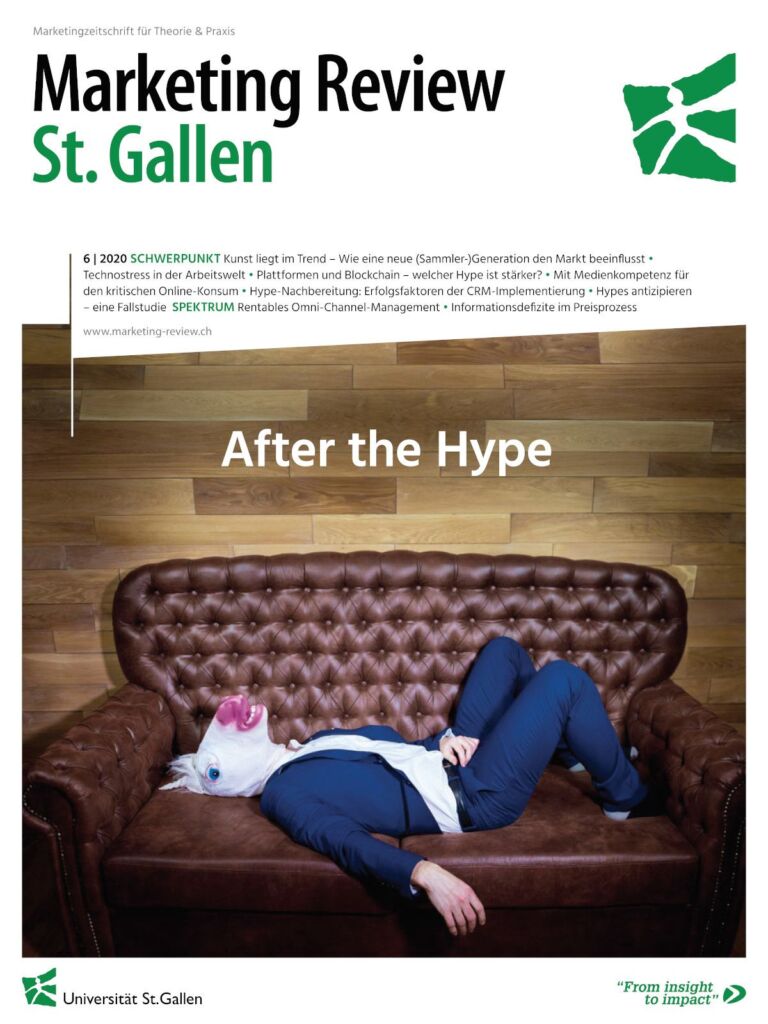Marketing Review St.Gallen 6 | 2020 "After the Hype"
Trends are transitory. We have known this at least since the euphoric enthusiasm about the social media platform “Second Life”. For a time in 2008, there was almost no other topic in marketing and media than to discuss the question: What’s the best thing to do on Second Life? The suggestions were complex and the Linden dollars to be used were already celebrated as the first digital currency. But after a good six months the platform had fallen out of the hype into a “valley of disillusionment”.
Time and again, companies follow trends with great euphoria. In doing so, they often act in an unplanned manner and give in to the assumption that a media-dominant trend that is “hyped” must also have an impact on their business – although this may be relevant to only a small section of society. In addition, there is often a lack of awareness that hypes are dynamic phenomena and that the time after the hype must be followed at least mentally.
It is noticeable that both the public and companies quickly turn their backs on trends once they are through their “hype phase”. In many cases, however, it is only then that a real examination of the potentials of many trends is possible. After the hype, enthusiasm quickly evaporates and critical (and in part extremely negative) voices gain the upper hand in trend assessment. But now it becomes possible to compare the arguments of the proponents and critics and thus to analyze a trend in a differentiated way and to screen it for potentials for your own company. This provides insights into how to deal with specific trends that prove to be sustainable in the long term. In the time after the Hype it is besides for the first time possible to learn from the actions and errors of other enterprises. This generates knowledge that helps to better react to future trends and hypes. Because: The next Hype comes certainly!
For this issue, we have been able to attract authors from research and practice who explore the diversity of this topic from different perspectives. Some dedicate their investigations to individual phenomena, others look at corporate behavior in and after hype phases, and some take a very critical look at certain hypes. We wish our readers an interesting read!
This text was released in German as editorial of the current issue of Marketing Review St.Gallen with the topic “After the Hype”. You can find it in our shop.
